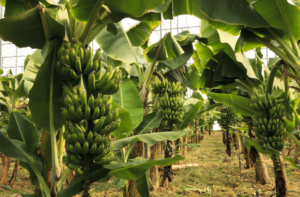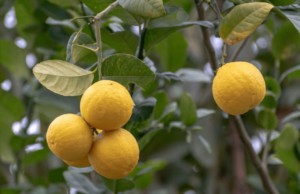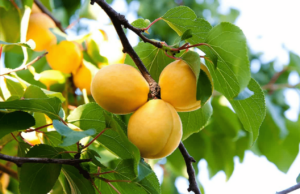Maximizing Small Spaces: Landscaping for Small Yards
When it comes to landscaping a small yard, it’s important to understand the limitations that come with limited space. Small yards often have less room for large trees, expansive flower beds, or sprawling lawns. This means that careful planning and strategic design are essential to make the most of the available space. Additionally, small yards may have limited sunlight exposure or poor soil quality, which can further restrict the types of plants that can thrive in the space. Understanding these limitations is crucial for creating a successful and sustainable landscape design.
In a small yard, it’s important to prioritize functionality and practicality over aesthetics alone. This means considering how the space will be used and what activities will take place in the yard. For example, if the yard is primarily used for entertaining, then creating a functional outdoor living area should be a top priority. On the other hand, if the yard is used for gardening or relaxation, then incorporating greenery and comfortable seating areas may be more important. By understanding the limitations of small yards and considering the intended use of the space, homeowners can make informed decisions about how to best utilize the available area.
Key Takeaways
- Small yards have limitations such as limited space for planting and landscaping
- Choose plants that are suitable for small spaces, such as dwarf varieties and container plants
- Utilize vertical space by using hanging plants, trellises, and vertical gardens
- Create functional outdoor living areas by using space-saving furniture and accessories
- Incorporate multi-functional furniture and accessories to maximize the use of space
- Implement creative hardscaping solutions such as using pavers, gravel, and raised beds
- Maintain and care for a small yard landscape by regular pruning, watering, and fertilizing to keep it looking its best
Choosing the right plants for small spaces
When it comes to landscaping a small yard, choosing the right plants is crucial for creating a visually appealing and sustainable outdoor space. In a small yard, it’s important to select plants that are well-suited to the limited space and can thrive in the specific environmental conditions of the area. This may include choosing compact or dwarf varieties of trees and shrubs, as well as selecting plants that are low-maintenance and can tolerate poor soil quality or limited sunlight exposure. Additionally, incorporating a mix of evergreen and flowering plants can help create year-round interest and color in a small yard.
In a small yard, it’s also important to consider the scale and proportion of plants in relation to the overall size of the space. Choosing plants that are proportionate to the yard’s dimensions can help create a balanced and harmonious landscape. Additionally, selecting plants with varying heights, textures, and colors can add visual interest and depth to a small yard. By carefully choosing the right plants for small spaces, homeowners can create a beautiful and thriving landscape that enhances the overall appeal of their outdoor area.
Utilizing vertical space for landscaping
In small yards, utilizing vertical space is essential for maximizing the available area and creating a lush and visually appealing landscape. Vertical gardening techniques such as trellises, arbors, and wall-mounted planters can help homeowners make the most of limited ground space by adding greenery and visual interest to vertical surfaces. This can include growing climbing plants such as ivy or jasmine on trellises or using hanging planters to add cascading foliage to walls or fences. By utilizing vertical space for landscaping, homeowners can create a vibrant and dynamic outdoor environment that makes the most of every inch of their small yard.
In addition to adding greenery, vertical space can also be utilized for functional purposes such as creating privacy screens or defining different areas within the yard. For example, installing a trellis with climbing vines can create a natural privacy barrier between neighboring properties, while also adding beauty and texture to the landscape. Similarly, using vertical elements such as pergolas or archways can help define outdoor living areas or create visual focal points within a small yard. By creatively utilizing vertical space for landscaping, homeowners can maximize the potential of their small yard and create a multi-dimensional outdoor oasis.
Creating functional outdoor living areas
| Aspect | Metrics |
|---|---|
| Space utilization | Percentage of outdoor space used for living area |
| Comfort | Number of seating options available |
| Functionality | Number of functional elements (grill, fire pit, etc.) |
| Greenery | Percentage of living area covered by plants |
| Lighting | Number of lighting fixtures for evening use |
In small yards, creating functional outdoor living areas is essential for maximizing the use and enjoyment of the available space. This may include designing a cozy seating area for relaxation, incorporating a dining space for al fresco meals, or adding a fire pit for warmth and ambiance. When designing outdoor living areas in small yards, it’s important to prioritize functionality and practicality by selecting furniture and accessories that are proportionate to the space and can serve multiple purposes. For example, choosing compact and multi-functional furniture such as foldable tables or stackable chairs can help maximize seating options while also allowing for flexibility in the layout of the outdoor area.
In addition to furniture, incorporating accessories such as outdoor rugs, cushions, and lighting can help enhance the comfort and visual appeal of outdoor living areas in small yards. This may include adding soft furnishings to create a cozy atmosphere or installing ambient lighting to extend the usability of the space into the evening hours. By creating functional outdoor living areas that are well-designed and thoughtfully furnished, homeowners can make the most of their small yard and enjoy spending time outdoors in a comfortable and inviting environment.
Incorporating multi-functional furniture and accessories
In small yards, incorporating multi-functional furniture and accessories is essential for maximizing the use of limited space while also adding versatility and practicality to outdoor areas. This may include selecting furniture pieces that can serve multiple purposes, such as storage benches that double as seating or coffee tables with built-in planters. By choosing multi-functional furniture, homeowners can optimize the available space in their small yard while also reducing clutter and maximizing functionality.
In addition to furniture, incorporating multi-functional accessories such as portable grills, foldable umbrellas, or modular planters can help homeowners make the most of their outdoor area without sacrificing style or comfort. This may include selecting accessories that are easy to move or reconfigure to accommodate different activities or changing needs. By incorporating multi-functional furniture and accessories into their small yard landscape, homeowners can create a versatile and adaptable outdoor space that meets their specific needs while also enhancing the overall appeal of their outdoor area.
Implementing creative hardscaping solutions

In small yards, implementing creative hardscaping solutions is essential for adding structure, visual interest, and functionality to outdoor spaces. This may include using materials such as pavers, gravel, or decking to create defined pathways, seating areas, or outdoor dining spaces. By incorporating hardscaping elements into a small yard landscape, homeowners can add texture and depth to the outdoor environment while also creating practical and usable areas for various activities.
In addition to pathways and seating areas, hardscaping solutions can also include features such as retaining walls, raised planters, or water features that add visual appeal and functionality to a small yard. For example, installing a raised planter along a fence line can create additional planting space while also adding architectural interest to the landscape. Similarly, incorporating a small water feature such as a fountain or pond can add tranquility and ambiance to a small yard while also attracting wildlife and creating a focal point within the outdoor area. By implementing creative hardscaping solutions into their small yard landscape, homeowners can enhance the overall design and usability of their outdoor space.
Maintaining and caring for a small yard landscape
Once a small yard landscape has been designed and installed, it’s important to establish a maintenance routine to ensure that the outdoor area remains healthy, vibrant, and visually appealing. This may include regular watering, fertilizing, pruning, and weeding to keep plants and greenery looking their best. In addition to plant care, maintaining hardscaping elements such as pathways, decking, or retaining walls is essential for preserving their functionality and aesthetic appeal over time.
In a small yard landscape, it’s also important to regularly clean and maintain outdoor furniture and accessories to ensure their longevity and usability. This may include storing cushions and textiles during inclement weather, cleaning surfaces regularly, and performing any necessary repairs or touch-ups as needed. By establishing a regular maintenance routine for both plants and hardscaping elements, homeowners can ensure that their small yard landscape remains beautiful and enjoyable for years to come.
In conclusion, landscaping a small yard comes with its own set of challenges and limitations, but with careful planning and thoughtful design choices, homeowners can create beautiful and functional outdoor spaces that maximize every inch of available area. By understanding the limitations of small yards and choosing the right plants for the space, utilizing vertical space for landscaping, creating functional outdoor living areas with multi-functional furniture and accessories, implementing creative hardscaping solutions, and maintaining the landscape with regular care and attention, homeowners can transform their small yards into inviting and vibrant outdoor retreats that enhance their overall quality of life.
FAQs
What are some tips for landscaping a small yard?
Some tips for landscaping a small yard include using vertical space, choosing smaller plants, creating separate zones, and using multi-functional furniture.
What are some design ideas for small yard landscaping?
Design ideas for small yard landscaping include creating a focal point, using containers for plants, incorporating a small water feature, and adding lighting for ambiance.
How can I make a small yard look bigger with landscaping?
To make a small yard look bigger with landscaping, consider using diagonal lines, creating depth with layers of plants, using light-colored materials, and avoiding clutter.
What are some low-maintenance landscaping options for small yards?
Low-maintenance landscaping options for small yards include using native plants, incorporating hardscaping elements, choosing drought-tolerant plants, and using mulch to reduce weed growth.
What are some common mistakes to avoid when landscaping a small yard?
Common mistakes to avoid when landscaping a small yard include overcrowding with plants, using large-scale features, neglecting the vertical space, and not considering the overall design and flow of the space.



